Whole School, Whole Community, Whole Child (WSCC)
HIV, STDs and pregnancy can lead to long term negative impacts in the lives of adolescents and carry into adulthood. DASH works closely with education and health agencies and non-governmental organizations to ensure programs, policies, practices, and research integrate the following components of the Whole School, Whole Community, Whole Child (WSCC) model:
How does the WSCC model improve health outcomes and academic performance for youth? This animated video demonstrates how implementing the model affects adolescents throughout their school day, at home, and in their community. A shorter video is also available.
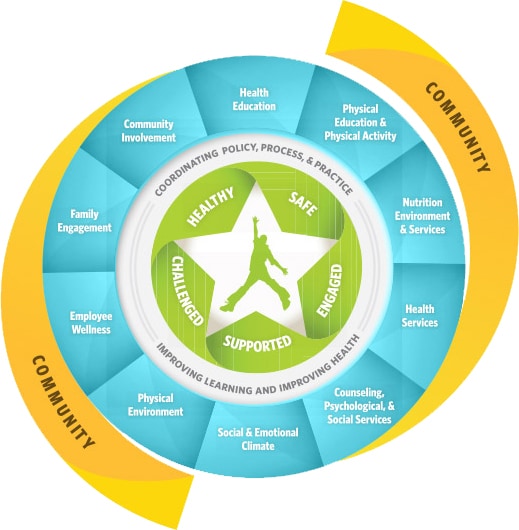
Coordination Ring Learn More
Research and data fosters collaboration and coordination around policies, processes, and practices.
- The School Health Policies and Practices Study (SHPPS) helps stakeholders understand the collaboration among staff from each school health program component and with staff from outside agencies and organizations. This national survey collects data at the state, school district, school, and classroom levels. The information may be important to health councils and outside stakeholders interested in coordinating school policies about professional development and credentials.
- The School Health Profiles (Profiles) is a system of surveys that assess school health policies and practices in states, large urban school districts, and territories. To increase collaboration across policies, practices, and processes, stakeholders need to understand what is happening with the key health policies and practices in their schools, which is critical to local decision making.
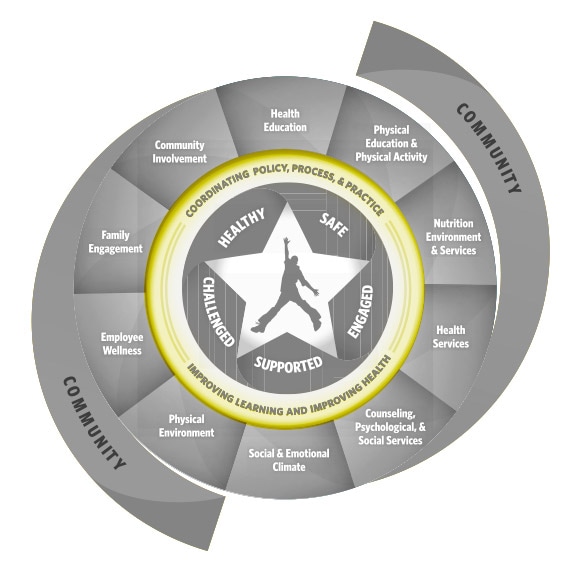
Health Education Learn More
Tools and data inform curriculum and policies.
- The Health Education Curriculum Analysis Tool (HECAT) can help identify a curriculum that best meets a district’s health education needs.
- The HECAT can assess the affordability and feasibility of implementing curricula, and identify strengths and weaknesses to inform decisions about curriculum selection.
- Online HECAT training is available.
- Developing a Scope and Sequence for Sexual Health Education [PDF – 2 pages] assists education agencies in identifying a curriculum, including what students should know and when it should be taught for each grade or grade group to lower students’ risk of HIV, STD, and pregnancy.
- The School Health Policies and Practices Study (SHPPS) includes measures of health education policies and their implementation, and describes how these measures change over time.1 This can help decision makers learn which policies, if changed, may improve health education practices.
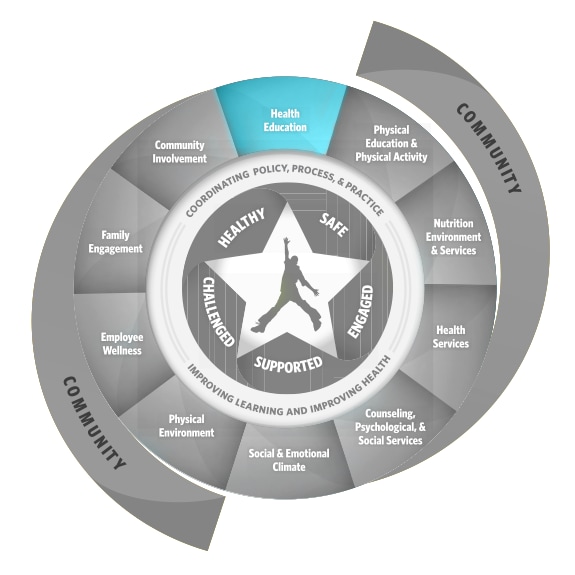
Health Services Learn More
Tools and data inform health services policies, practices, and partnerships.
- Developing a Referral System for Sexual Health Services: An Implementation Kit for Education Agencies helps organizations create their own referral systems for youth-friendly sexual health services. Referral systems are particularly important for lesbian, gay, bisexual, and transgender (LGBT) populations who can find it even more difficult to find services that meet their needs.
- Establishing Organizational Partnerships to Increase Student Access to Sexual Health Services: A Resource Guide for Education Agencies helps schools develop more effective external partnerships.
- The School Health Policies and Practices Study (SHPPS) includes important measures of health services policies and their implementation, and describes how these measures change over time.
- The School Health Profiles (Profiles) provides data on school-based health services policies and school activities for states, large urban school districts, and territories.
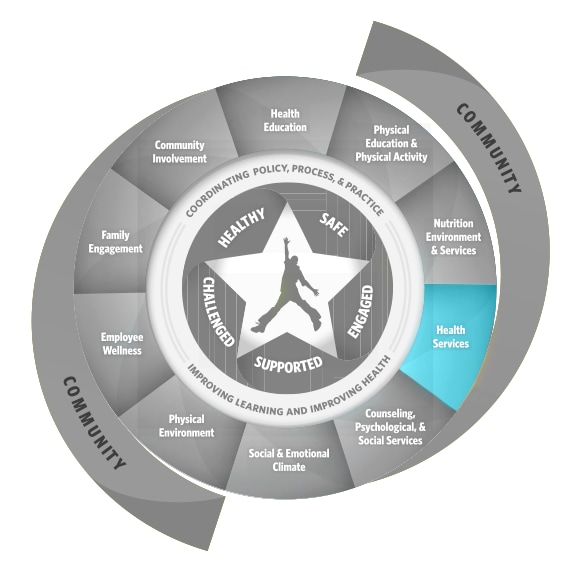
Counseling, Psychological, & Social Services Learn More
Tools and data inform policies and practices for school-based mental health services.
- The 2014 Results from the School Health Policies and Practices Study (SHPPS) [PDF – 1.9 MB] provides national data about policies for school-based mental health services and schools’ implementation of these policies. This can help decision makers learn what may need to change to improve counseling, psychological, and social services to better meet students’ needs.
- The School Health Profiles (Profiles) provides data on bullying and sexual harassment practices in schools for states, large urban school districts, and territories.
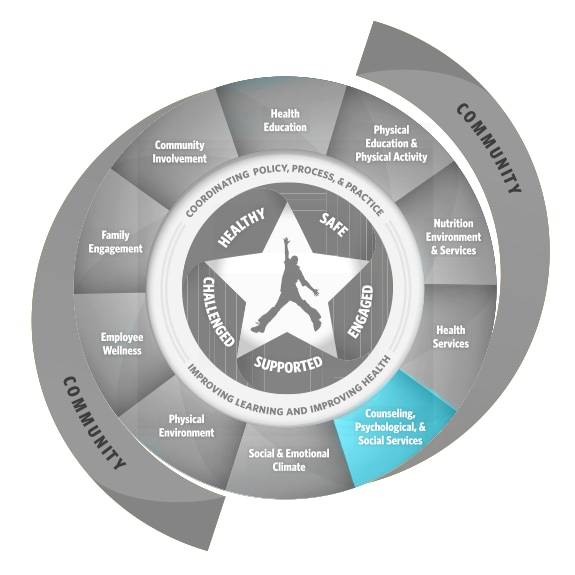
Family Engagement Learn More
Tools and data promote parent engagement and positive parenting practices.
- Parent Engagement provides several guides for promoting parent engagement in schools. Parent and family engagement in schools is closely linked to better student behavior, higher academic achievement, and enhanced social skills—making it more likely that adolescents will avoid unhealthy behaviors.
- Positive Parenting Practices provides tools and guides to help parents engage in positive parenting by helping youth make healthy choices.
- The School Health Policies and Practices Study (SHPPS) provides national data on family engagement at the school and classroom levels to improve understanding of the current practices and changes over time.
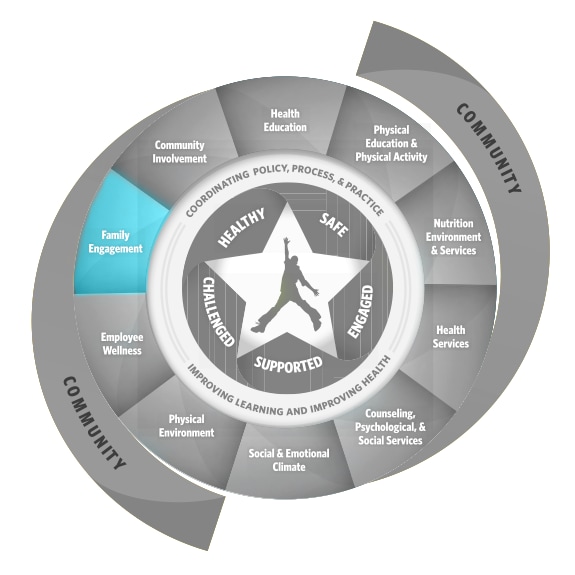
Community Involvement Learn More
Data on community involvement informs policies and activities.
- The School Health Profiles (Profiles) provides data on community involvement policies and activities in schools for states, large urban school districts, and territories.
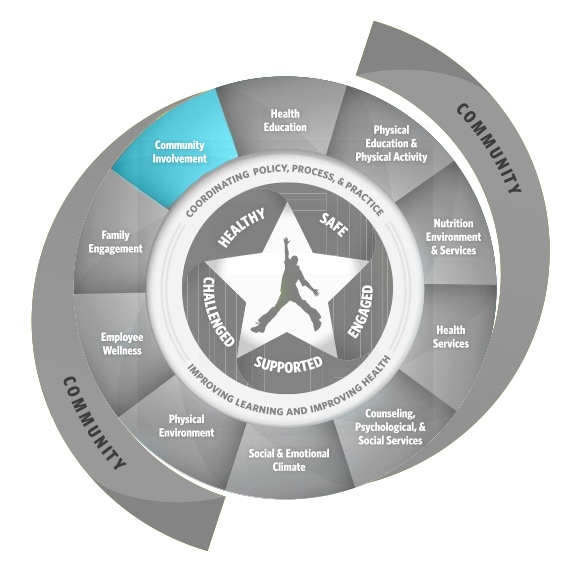
For a printable resource, download The WSCC Model: How It Informs HIV, STD, & Pregnancy Prevention [PDF – 4 MB]. This digital version of DASH’s printed flipbook demonstrates how DASH and CDC partners leverage the WSCC model in their youth-focused, HIV and STD prevention efforts.
- Centers for Disease Control and Prevention. Division of Adolescent and School Health. Results from the School Health Policies and Practices Study. 2016 [2018 Feb 20].
- Brener ND, Demissie Z, McManus T, Shanklin SL, Queen B, Kann L. School Health Profiles 2016: Characteristics of Health Programs Among Secondary Schools [PDF – 4.4MB]. (USA, Centers for Disease Control and Prevention). 2017 [cited 2018 Feb 20].
- Centers for Disease Control and Prevention. Health Education Curriculum Analysis Tool, 2012, Atlanta: CDC. 2012 [2018 Feb 20].
- Centers for Disease Control and Prevention. Developing a Scope and Sequence for Sexual Health Education [PDF – 1.77 MB]. 2016 [2018 Feb 20].
- National Coalition of STD Directors, Cicatelli Associates Inc., and Centers for Disease Control and Prevention. Developing a Referral System for Sexual Health Services: An Implementation Kit for Education Agencies. 2015 [2018 Feb 20].
- Cicatelli Associates Inc., National Coalition of STD Directors, and Centers for Disease Control and Prevention. Establishing Organizational Partnerships to Increase Student Access to Sexual Health Services: A Resource Guide for Education Agencies. 2015 [2018 Feb 20].
- Centers for Disease Control and Prevention. Division of Adolescent and School Health. Results from the School Health Policies and Practices Study [PDF – 1.9MB]. 2014 [2018 Feb 20].
- Centers for Disease Control and Prevention. Division of Adolescent and School Health. Fostering School Connectedness: Information for School Districts and Administrators; Improving Student Health and Academic Achievement [PDF – 1.7MB]. 2009 [2018 Feb 20].
- Centers for Disease Control and Prevention. Division of Adolescent and School Health. (2009). Fostering School Connectedness: Information for School Teachers and Other Staff: Improving Student Health and Academic Achievement [PDF – 1.44MB]. 2009 [2018 Feb 20].
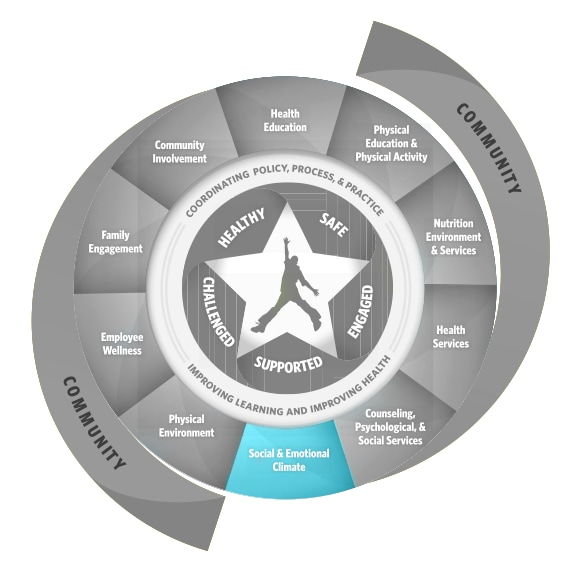
Social & Emotional Climate Learn More
Tools and data inform policies and practices related to school connectedness and bullying.